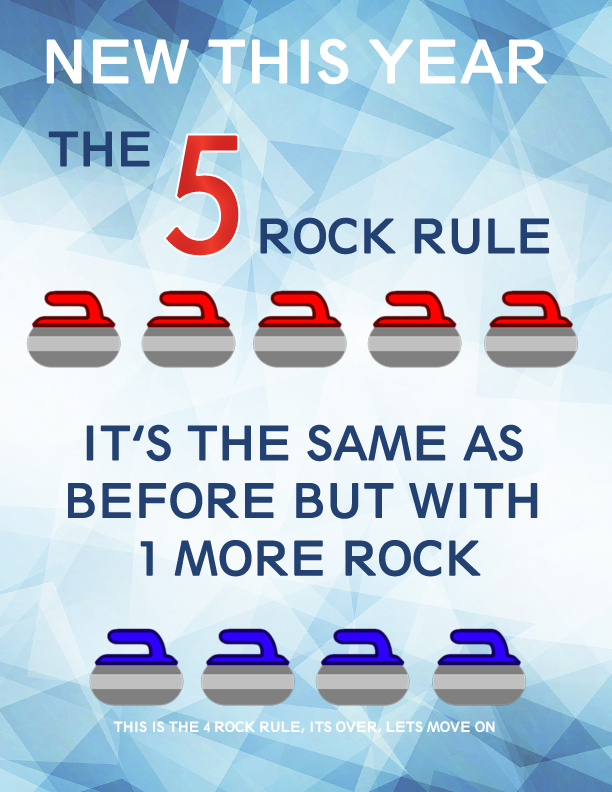
The World Curling Federation and Curling Canada have both implemented the five-rock free-guard zone (FGZ) rule this season, replacing the four-rock rule that had been in effect. The Cornwall Curling Club will, of course, be adopting the revised rule, as any provincial or other championship under Curling Canada’s guidance will be using it, and it wouldn’t make much sense to play under different rules at a club.
The expanded rule means that the first five rocks thrown each end (normally the two rocks thrown by each lead and the first rock thrown by the second on the team without last rock advantage) are “protected” and cannot be removed from the FGZ between the hog line and the house until the sixth rock is thrown each end. If a rock is removed before that time, it is put back. It is fine to move an opponent’s rock by tapping it with another, as long as it remains in play.
It is expected that the extra stone in the FGZ will increase offense, reduce blank ends, and generally lead to more entertaining games.
Here are the official rule revisions from Curling Canada’s rule book:
Rule Change – Adopt the 5-rock rule (effective 2018-2019)
Officiated Rules – Rule 13. Free Guard Zone (FGZ) (2)(3)
General Rules – Rule 12. Free Guard Zone (FGZ) (2)(3)
(2) Any stationary stone(s) belonging to the opposition located in the FGZ shall not be removed from play by the delivering team prior to the delivery of the 6th stone of the end. When an opponent’s stone(s) that is removed from play from the FGZ prior to the 6th stone of the end, directly or indirectly, without exception, the delivered stone must be removed from play and any other displaced stones replaced as close as possible to its original position. Any stone previously in the FGZ but now located in the rings, biting the tee-line, or behind the tee-line, may be removed at any time.
(3) A delivered third, fourth or fifth stone of an end may hit an opposition stone(s) located in the FGZ on to a stone(s) not in the FGZ providing that any opposition stone originally located in the FGZ remains in play. If an opponent’s stone(s) is removed from play, apply Rule 13(2) (or Rule12(2)).
